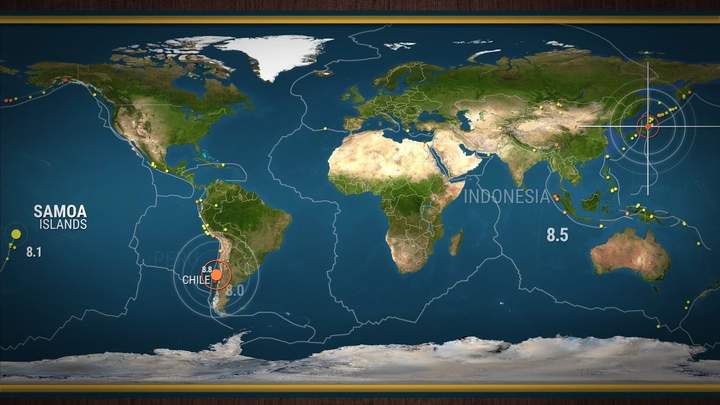The US Geological Survey (USGS) estimates that millions of earthquakes occur every year, but only one of them will be a "great earthquake" — that is, one with a magnitude of 8.0 or above. Here are where all the "great earthquakes" since 1900 have struck.
--------------------------------------------------
Follow BI Video on Twitter: http://bit.ly/1oS68Zs
Follow BI on Facebook: http://bit.ly/1W9Lk0n
Read more: http://www.businessinsider.com/
--------------------------------------------------
Business Insider is the fastest growing business news site in the US. Our mission: to tell you all you need to know about the big world around you. The BI Video team focuses on technology, strategy and science with an emphasis on unique storytelling and data that appeals to the next generation of leaders – the digital generation.
--------------------------------------------------
Follow BI Video on Twitter: http://bit.ly/1oS68Zs
Follow BI on Facebook: http://bit.ly/1W9Lk0n
Read more: http://www.businessinsider.com/
--------------------------------------------------
Business Insider is the fastest growing business news site in the US. Our mission: to tell you all you need to know about the big world around you. The BI Video team focuses on technology, strategy and science with an emphasis on unique storytelling and data that appeals to the next generation of leaders – the digital generation.
Video
Descripción
Animation of where the largest earthquakes of the past 100 years have struck
Clasificaciones
Formato
Cursos / Niveles
Asignaturas / Ambitos
Eje
Licenciamiento
Licencia Youtube
Objetivos de aprendizaje del recurso
Objetivo de aprendizaje CN1M OA 13 CN1M OA 13
Describir el origen y la propagación, por medio del modelo ondulatorio, de la energía liberada en un sismo, considerando:
- Los parámetros que lo describen (epicentro, hipocentro, área de ruptura, magnitud e intensidad).
- Los tipos de ondas sísmicas (primarias, secundarias y superficiales).
- Su medición y registro (sismógrafo, escalas sísmicas).
- Sus consecuencias directas e indirectas en la superficie de la Tierra (como tsunamis) y en la sociedad.
- Su importancia en geología, por ejemplo, en el estudio de la estructura interna de la Tierra.
